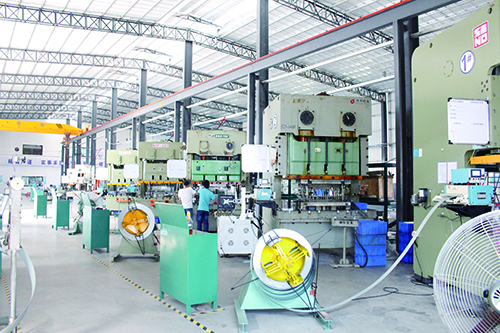In the long-term continuous stamping process, the main working parts of the stamping die is including the die, punch, side edge, scrap cutter and so on, and the forming convex and concave molds with different cavities are naturally damaged and accidental damage, so that the continuous mold cannot operate normally, it also cannot punch out the qualified stampings so that interrupting the production, we must be combined with the mold maintenance problems to find the reasons for the stamping mold, improve the countermeasures and repair .
The working parts of the mold the surface quality have a very close relationship with the wear resistance, fracture resistance and anti-adhesive ability of the mold, which directly affects the service life of the mold. In particular, the surface roughness has a great influence on the life of the mold. If the surface roughness is too bad, stress concentration will occur during operation, and cracks will easily occur between peaks and valleys, which will affect the durability of the die and durability. To this end, the following should be noted:
1 During the processing of the mold working parts, it is necessary to prevent the surface of the parts from being ground. The grinding process conditions and process methods (such as grinding wheel hardness, particle size, coolant, feed rate, etc.) should be strictly controlled;
2 During the processing, the surface of the working part of the mold should be prevented from leaving a knife mark. Macroscopic defects such as interlayers, cracks, and impact flaws.
We are whether the manufacturing material of the stamping die is suitable or not, or the corresponding hot-buried process is reasonable or not. The heat treatment process of the stamping die material has a great influence on it. If the quenching temperature of the stamping die is too high, the quenching method and time are unreasonable, and the improper selection of the elbow fittings, the mold will be damaged after entering the stamping production. The dimension or depth of the blanking hole is not designed enough to easily block the slot and cause the blanking plate to be damaged. If the spring force design is too small or the height is not equal, the spring will break and the blanking plate will tilt. So it made punches damage. Improper punch or insufficient screw strength. Will cause the punch to fall or break.
When the stamping die is working, the position and orientation of the parts are incorrectly installed or the bolts are not fastened. The working height is adjusted too low and the guide column is insufficiently lubricated. If the feeding equipment is faulty, the press is abnormal, etc., so that stamping die will be damaged. If the other things enters the stamping die, the overlap of the parts, the blockage of the waste, etc., it is not solve in time, and the
mass production are still continued, so that the blanking plate, the punch, the lower die plate and the guide post of the die are easily damaged.





